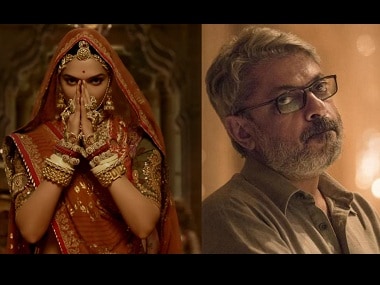Round six of the London Chess Classic witnessed some nail-biting action. Yet again, one win and four draws were witnessed. Tournament leader, Fabiano Caruana made a solid draw against Maxime Vachier-Lagrave with black pieces. Levon Aronian went for a wild line of play against Wesley So from the black side of a Ruy Lopez. Hikaru Nakamura had world champion Magnus Carlsen on ropes but let the world champion off after “seeing some ghosts”.
Viswanathan Anand went for a quick draw against Sergey Karjakin after being caught off guard by the Russian Grand Master’s opening. While the games of Nakamura, Aronian and Caruana got most of the attention, one game seemed to be sidelined due to its seemingly uneventful outlook – Michael Adams against Ian Nepomniachtchi. However, as all the high-profile games ended peacefully, this was the one that finished as the only decisive game of the round.

Viswanathan Anand in action against Sergey Karjakin. Lennart Ootes
The first game to finish was the one between Anand and Karjakin. Anand opted for the English Opening with white pieces. After his loss in the previous round, this was a good opportunity for him to make a comeback in the tournament. He had had a day of rest and had white pieces against another tail-ender at the event. Of course, it wouldn’t be right to term Karjakin as an easy opponent. But considering all the other factors, this seemed like a good chance for Anand.
Karjakin, however, had come extremely well-prepared for the game and Anand fell right into his opponent’s preparation. After the game, Anand admitted to have been caught off guard by Karjakin’s opening novelty on move 12. "I must admit he caught me a bit with Qa6. Obviously this is not the only line in the English I had to check, so my work was a bit distributed. But Qa6 caught me off guard," Anand said after the game.
Karjakin, who was making moves out of memory in this game, said that he didn’t think he had a better position and saw no reason not to go for a draw when Anand began repeating moves.
Vachier-Lagrave’s game against Caruana was the next one to finish. The latter, who is leading the tournament after having won two back-to-back games in the past two rounds, went for a more safe approach in this round. With the black pieces, he chose the ultra-solid Petroff Defence – or as the Americans might call it, the Russian defence – in response to his opponent’s King’s Pawn Opening. After a mass exchange of pieces right out of the opening, Caruana had absolutely no trouble holding Vachier-Lagrave to a draw.
After the game, Caruana stated that his preparation went until the 22nd move in the game but he hadn’t analysed white’s 23rd move in depth. He further added that he could have complicated the position on move 26 but chose not to since at the end of the variation, the position still looked equal. Therefore, he went for the 'cleaner' approach and signed peace by move 36.
Vachier-Lagrave tipped his hat to Caruana for his preparation, but also felt that he did not play in the most challenging manner with white.
Nepomniachtchi opened with the ambitious Najdorf variation of the Sicilian. However, when it all started, it seemed it was rather Adams who had the better position out of the opening and for the better part of the middlegame. Nepomniachtchi, in the meantime, was busy improving the position of his clumsily-placed knight. But as play progressed, Nepomniachtchi was able to liquidate all pawns on the queenside and emerged with an extra pawn in the ensuing rook-and-pawn endgame.
For Adams, defending this endgame didn’t seem to be much of an issue. In fact, he had defended a similar endgame against Vachier-Lagrave in Round 3. Things were, however, slightly more complicated in this one and, therefore, Nepomniachtchi gave it his best shot.

Michael Adams pits his wits against Ian Nepomniachtchi. Lennart Ootes
"E and f versus g, it can be tricky sometimes; it's not like you can make any move. At some point you should play precisely. I think Michael was doing great but when he went with his rook to the h-file, in the most passive position, then it might be already lost," Nepomniachtchi explained after the game.
As for Adams, he regretted not forcing a draw when he could have. "I just made some very bad decisions in time trouble; I could have forced a draw when it was time to do it. But instead, I went for it and then I ended up in this rook-and-pawn ending. Maybe, I could draw with increment, but with delay I realised actually it was very difficult because I had to start playing fast because my time was running out," he said after the game.
The other two games of the round were extremely complicated. In the game between Nakamura and Carlsen, the former avoided the dreaded Berlin Defence by going for the Scotch Opening. From the very start, the game was filled with excitement. Carlsen gave up two minor pieces for a rook early in the game and caught Nakamura’s king in the centre. Nakamura too got his share of attack on Carlsen’s king on the queenside. As the dust settled, Nakamura emerged with an extra piece but Carlsen had three pawns as compensation.
As play progessed, the world champion dropped two of his extra pawns and the position looked dead lost for him. But in this seemingly easy-winning endgame, the American failed to find the right plan and let Carlsen slip out with a draw.
But despite this miss, Nakamura thought he played a very good game overall, but a few bad moves towards the end kept him from winning. "You know, it wasn’t easy. And I kind of just couldn't find the right way. I just started seeing some ghosts there and, unfortunately, I think it's too late," he said, talking to Grand Master Maurice Ashley.
Carlsen was quite impressed by his opponent’s play and praised Nakamura for his play and positional evaluation. "I thought it was very interesting from the opening. Obviously I was quite pleased to play a complicated position seeing that I needed to win some games. I think he played very well and he evaluated the resulting position better than I did,” Carlsen said.
In the game between So and Aronian, the former ensured that he did not give Aronian any chance to play his favourite Marshall Gambit by going for the 8.a4 Anti-Marshall. But going into the middlegame, Aronian happened to find an artsy line which began with giving up two minor pieces for a rook. As play progressed, the Armenian No 1 had sacrificed a full rook to get his attack going. To neutralise the attack, So had to give up his queen but had a rook and two pieces as compensation. Materially speaking, So’s compensation was more than enough. However, the discoordination among his pieces allowed Aronian to create a passed pawn and get the advantage. But then, Aronian got lost in variations and failed to find the winning plan. Eventually, the two ended up repeating moves and signing peace.
After his win on Friday, Nepomniachtchi is hot on Caruana’s heels, just half-a-point behind the tournament leader. Nakamura, having missed his winning opportunity against Carlsen, is joint third along with four others, while Adams has joined Anand and Karjakin at the bottom of the leaderboard after his sixth round loss.
Crosstable after six rounds

Aditya Pai is an editor at ChessBase India.
Published Date: Dec 09, 2017 08:01 pm | Updated Date: Dec 09, 2017 08:21 pm

















